How Babies Use All 5 Senses When Learning to Eat
In this episode we're talking about:
- The importance of sensory experiences in learning how to eat & creating a peaceful eating environment
- The "why" behind allowing babies to touch and explore food textures
- When to introduce utensils at the appropriate time
- The strong connection between smell and taste
- The benefit for your baby's palate of offering a diverse range of foods
- Episode 307 - Doing BLW When Someone Else Helps Watch Your Baby
- Episode 265 - BLW at Daycare: How These Parents Made it Work
- Episode 18 - Daycare: How Can I Get Caregivers on Board with Baby-Led Weaning

LISTEN TO THIS EPISODE
Episode Description
Eating is a FULL sensory experience for your baby! In this episode we'll discusses how babies use all five of their senses when learning how to eat. We cover the importance of familiar and pleasant aromas in enticing babies to try new foods, as well as the role of vision, hearing, touch, smell, and taste in the sensory experience of eating. Babies need enough time and space to learn how to eat while engaging all their senses, rather than just focusing on how much they are eating! Tune in to gain confidence and knowledge on giving your baby a safe start to solid foods using baby lead weaning.
Links from this Episode
- Baby-Led Weaning with Katie Ferraro program with the 100 First Foods™ Daily Meal Plan, join here: https://babyledweaning.co/program
- Baby-Led Weaning for Beginners free online workshop with 100 First Foods™ list to all attendees, register here: https://babyledweaning.co/baby-led-weaning-for-beginners
Other episodes related to this topic:
- Episode 307 - Doing BLW When Someone Else Helps Watch Your Baby
- Episode 265 - BLW at Daycare: How These Parents Made it Work
- Episode 18 - Daycare: How Can I Get Caregivers on Board with Baby-Led Weaning

Latest Episodes
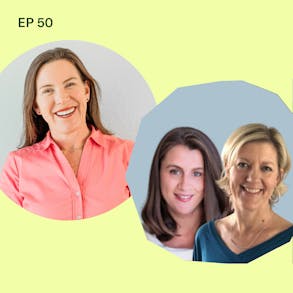
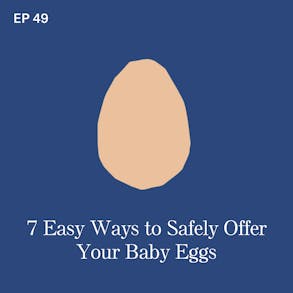

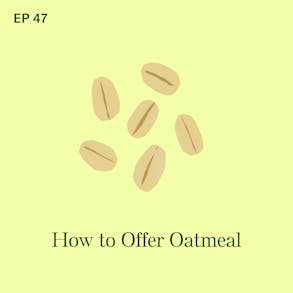

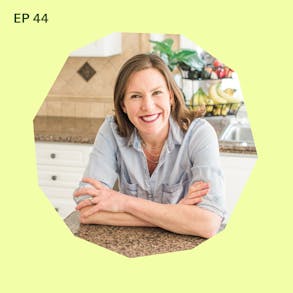
Katie Ferraro (1m 36s):
And when it comes to smell Babies use their sense of smell to evaluate food, right? Those familiar and pleasant aromas, they can entice a baby to try new foods. And you see this a lot, especially if you're doing like my purees for a few days approach, where the first few days we're combining new foods like let's say the first meat we do, it's lamb If. you wanna do the pureed up lamb, we mix it with breast milk or formula that's a familiar scent or aroma to your baby, combined with the new food, which is lamb. We can do that as it's thinned out out of an open cup. And as that cup comes near your baby's nose, they smell what's in there long before they taste it. So that is an important sensory experience for your baby as they're learning how to eat. Hey there.
Katie Ferraro (2m 16s):
I'm Katie Ferraro, registered dietitian, college nutrition professor and mom of seven specializing in babyled Weaning here on the Baby-Led Weaning Made Easy podcast. I help you strip out all of the noise and nonsense about feeding, leaving you with the confidence and knowledge you need to give your baby a safe start to solid foods using baby lead weaning. You know how when your baby is learning how to eat, they make a huge mess and you look at 'em some days and you're like, are you even learning anything? Well, learning how to eat is actually a full sensory experience and we know that it's not important how much your baby is eating early on, but it's important that we're allowing babies enough time and space to learn how to eat.
Katie Ferraro (3m 3s):
And so in today's episode, I wanna go through how your baby is actually using all five of their Senses when they're learning how to eat. So we're gonna look at how vision plays a role, hearing, touch, smell, and taste. And I think sometimes we think like, oh, they didn't even put anything in their mouth so they didn't taste anything. But that's not the point. Again, we need to give our Babies a lot of time to learn how to eat. So let's start with vision. So your baby's visual development plays a really important role in their eating journey. So you often talk about like sad brown foods, like if a baby's plate is just like, looks like oatmeal every single day, like that's not very exciting, right? We know that bright and contrasting colors on a baby's plate can attract their attention, can actually make the food more appealing.
Katie Ferraro (3m 51s):
So think about some simple starter foods. Carrots are one that comes to mind, like if you're at Trader Joe's for example, or Whole Foods, or sometimes just any grocery store can have a variety of different colored carrots. Sometimes we do purple carrots or we do white carrots. They kind of taste the same. But the point is a variety of different colors can kind of help keep things visually appealing for your baby. So other foods that come in a variety of colors. Cauliflower is a great one. I know I love to make purple cauliflower. It kind of grosses my kids out, but they expect to see white cauliflower. So I like to mix it up sometimes by changing around the colors. And it is important for us as adults, we know, you know, modeling good behaviors and showing our Babies how we eat those foods.
Katie Ferraro (4m 33s):
We're preparing a variety of different colors of foods. It's mixing up what your baby sees on the plate and in that regard, they're exercising the sense of vision. Let's go next with hearing. Okay? A baby's sense of hearing can also influence their eating experience. Now, one thing we talk a lot about when we're starting solid foods, this idea of creating a peaceful eating environment. And I know that is easier said than done. You are super busy, you've got a lot of stuff going on and if your house is anything like mine, there are a ton of distractions around, even if I'm trying to create a peaceful eating experience. But what we want to do for your baby with regards to the hearing sense is set that peaceful environment by removing unnecessary noises.
Katie Ferraro (5m 18s):
So we sometimes talk about the dog and the dog barking and the dog is a huge distraction to the baby. If we can get the animals outta the room, certainly no screens at mealtime And. then when it comes to sound, you know, you make the call about music. Some families like to do soothing or gentle music during mealtime. Sometimes that's for the parent if they're feeling particularly anxious about starting solid foods to help calm them. But also it can be for the baby. Just setting that stage for a peaceful eating environment. Whenever we talk about here, I get mealtime, I start to laugh 'cause I think about like, you know, just the quintessential video baby picking up the food and like shoving it in their ear. We were watching videos of our friend's baby Emmy the other day, and she was trying pork for the first time. And like more pork probably ended up in her ear canal than like in her throat.
Katie Ferraro (6m 0s):
And that's fine because she was picking it up and she was smelling it and she was smushing it and she was tasting it and she had shove it in her ear at one point, which obviously is not required to eventually learn how to eat. But when you get stressed and you think, oh my gosh, my baby's not eating enough. Just remember eating and learning how to eat is a full sensory experience and we can do our part to kind of set this audible, peaceful environment. If that means removing loud noises, things that might potentially startle or scare the baby, especially when they're gagging, you know, we know the importance of not lunging at your baby or slapping their back or screaming at them, okay? Those things can cause that harmless gag to turn into a harmful choke, and we don't always have to be congratulating the baby.
Katie Ferraro (6m 41s):
Marsha Dunn Klein occupational therapist and feeding therapist has been on the podcast many times. She talks about this idea of excessive cheerleading, like the bombs who are always just like always having to talk and always having to talk the baby through it. It's totally not necessary. Get comfortable with silence and listen to what your baby is, the noises that they're making with their mouth or the peaceful music that you guys have set. You don't have to be excessively cheerleading your baby through this meal from a sound perspective. Hey, we're gonna take a quick break, but I'll be right back.
Katie Ferraro (8m 2s):
Next up is touch. Of course, touch is so important in the introduction of solid foods, letting your baby touch the food and explore the different textures with their fingers helps your baby become more comfortable with food. And that's kind of the whole premise of the baby led weaning approach, right? Our Babies are encouraged to self-feed and explore these textures of different foods. I was at a restaurant the other day, we have a new au pair who just joined our family. And so we took her out for lunch the other day with the kids and we were sitting next to this family as was with my mother-in-law and there was two grandparents and they were feeding a baby and obviously just started talking to them and the parents were outta town. It was her first trip and this baby was nine months of age and the baby kept like reaching for the food and the grandma, it made me so sad, but she was slapping the baby's hand away, not slapping like in a harmful way, but like, I'll do it for you.
Katie Ferraro (8m 48s):
Taking very small pieces of chicken and then pushing it in the baby's mouth, not allowing him to interact with the food at all. And I watched the baby like towards the, the beginning of the meal. Like he was frustrated and kind, not like fighting back, but definitely trying to take an autonomous role in feeding himself. And then very quickly when she was making him eat the food, he just gave up and sat there as a passive individual in this mealtime experience. And it was really sad to see. I know it's annoying when your baby touches the food, but that is part of how they learn how to eat, okay? Picking that food up, crossing their midline, exploring with their different fingers, eventually moving towards that pinch or grasp. Let your baby touch the food. That's an important part of learning how to eat. And please don't stress that they're not masterful or expert level with the spoon yet.
Katie Ferraro (9m 31s):
We start letting babies learn how to self feed by spoon around the six month mark. They get pretty good at it by around the 12 month mark, somewhere around nine, 10 months of age, your baby will start dipping and scooping with the spoon, but you've got this long runway for them to learn how to use utensils. And parents sometimes stress so much about the spoon, or they'll introduce a fork too early, like before the age of 12 months. And then the baby never has enough opportunity to practice with their fingers. So even when they're practicing with the spoon, remember you guys, they're gonna reach for that food with their hand. They're gonna eat the wrong end of the spoon. They're doing all of these things in unison, and that's a good thing. We want your baby touching the food. Next sense, moving on to smell. So you're probably aware that the connection between smell and taste is very well established, right?
Katie Ferraro (10m 14s):
Babies will often use their sense of smell to evaluate a food or a drink. And we see this a lot when we practice with open cup drinking, right? Babies can learn how to start drinking out of an open cup, usually around six months of age. I like to start with a thicker, familiar liquid like breast milk or formula. Okay? The smell there is very familiar to your baby, right? They've been having that exclusively for the first six months of their life. They know what that smells like, but now it's coming out of something different. An open cup. So when you put your hands outside of your baby's hands around that little tiny cup and you're helping to guide the cup to the baby's mouth before it gets to their mouth, it interacts with their nose and they're smelling what's in that cup. And then they look down and they realize, oh, there's something different in there.
Katie Ferraro (10m 56s):
But they're sensing what's in there with their nose first. And with the other foods that you're practicing with. If you're doing my purees for a few days approach to starting solid foods and you've got some meat and you're scared to try the strips of meats, you're gonna purate it up and put it on a preloaded spoon, also thin it out a little bit and put it in an open cup so your baby as it comes to their nose, they can smell. Hmm, that's a different smell. The meat smell. And what I'll often do is I'll, especially in those first few days, I'll combine whatever the food is with the breast milk or the formula. Again, that familiar smell, that's familiar flavor combined with something new like lamb or pork or beef, whatever the case may be. So for a baby trying new foods, it also means there are new smells, okay? And so there's this importance around introducing a variety of aromas and flavors to help expand our baby's palate.
Katie Ferraro (11m 41s):
And don't be scared to do this, you guys. I think sometimes parents are like, oh my gosh, they've never tasted anything except breast milk or formula. Spoiler alert, your baby has been exposed to different flavors already, right? Via the amniotic fluid when you're, you were pregnant with your baby, they got the transfer of the flavor compounds from the foods that you were eating. When you're breastfeeding, the foods that you eat, those flavor compounds transfer via breast milk as well. So this idea of introducing new flavors, you're just kind of continuing this effect for your baby. But smell is an important fourth sense here as your baby's learning how to eat. And then lastly, taste, right? Babies taste buds and their evolving preferences, they start happening from their first bites, okay? And breast milk or formula, the taste of that can change.
Katie Ferraro (12m 23s):
You know, if you've ever switched a formula with your baby, they know what's going on, right? Or if you've had something pun in your breast milk, maybe brussel sprouts or cabbage, some of those cruciferous vegetables, they can impart kind of more strong flavors to your baby. And so you don't need to be overly concerned about, oh my gosh, my baby's not ready to taste this or not taste that. One area of caution is obviously not to offer super duper spicy foods that could be injurious to your baby's health. We also talk from a health standpoint about why we minimize the amount of sodium in a baby's diet. Why we want your baby to learn how to taste the flavors of the food and not to mask that with salt. And also of course, avoiding added sugars, right? There are naturally occurring sources of sugar and all the foods we're offering our baby, or many of them rather, that's fine, but we do wanna stay away from those added sugars, okay?
Katie Ferraro (13m 7s):
So offering a diverse range of flavors early on helps your baby develop a well-rounded palette. Okay? So by allowing our babies to a lot of time to explore the foods that they're eating, we are allowing them to experience these foods from both a vision standpoint, right? Offering a variety of different colors and different shaped foods that the baby looks at and makes the connection between that food on that plate is eventually going to end up in my stomach. It's not gonna happen overnight. We know that, okay? It's a long road to get there, but mix up the variety of the colors and the shapes of the food that you're offering when you can second for hearing, okay? Don't forget to try to minimize those excessive distractions and create a peaceful eating environment. From a sound standpoint when it comes to touch, let your baby touch the food, okay?
Katie Ferraro (13m 50s):
Your job is to be in charge of as we know what you make and where you offer the foods and when you offer them, right? That's Ellyn Satter's, division of responsibility In feeding theory, you parent, you're in charge of what the baby eats, where they eat and when they eat, but the baby is ultimately in charge of how much or even whether they eat. So don't micromanage the part of the meal that you're not even in charge of. It's your baby's job to determine how much or even whether they eat and they're going to use their hands at first. Touch is very important. Hey, we're gonna take a quick break, but I'll be right back.
Katie Ferraro (15m 21s):
From the smell standpoint, get that open cup practice in starting around six months or whenever you feel up for it, keeping it mind that your baby's gonna smell the food before they taste it. And. then when it comes to taste, if you're moving through offering a variety of different foods, we do five new foods a week in my five step feeding framework. We do a new fruit on Monday, a vegetable on Tuesday, a starchy food on Wednesday, a protein food on Thursday, and an allergenic food on Friday. You move through those five new foods a week. It's 20 foods a month. In five months, your baby has tried a hundred different foods. I guarantee you they've had a radical exposure to different tastes and smells, opportunities to touch the food, lots of different eating experiences. Hopefully we're peaceful sounding in nature and lots of opportunities to see different types of food.
Katie Ferraro (16m 6s):
If, you wanna grab a copy of my 100 first Foods list? I give it away to everybody on my free online video workshop called Baby-Led Weaning For Beginners. I just redid this. It's 75 minutes now with lots and lots of visuals of how to prep the food and Babies picking up and feeding themselves foods at the different ages and stages. You can sign up for the babyledweaning.co and you can take it later today or tomorrow whenever it's convenient for your schedule. And If, you are interested in learning on how to make all of the foods from the 100 First Foods program, My program, Baby-Led Weaning with Katie Ferraro gives you the instructions on how to prepare foods safely for the different ages and stages. Plus, I have a hundred first day's meal plan. This is my original meal plan.
Katie Ferraro (16m 48s):
I've been tweaking this since 2016. It as one mom just described to me, it's a total game changer. So If, you need to check that out. It's at babyledweaning.co click on program. Thanks so much for listening. I'll link up the Shownotes from this episode at blwpodcast.com/362 and let your baby use those senses when they're learning how to eat. If you're interested in doing baby led weaning, but you're not exactly sure, like what does that mean? What does it look like? Where do I start? My online program called Baby-Led Weaning with Katie Ferraro has everything you need to give your baby a safe start to solid foods and get them to eat over a hundred foods before they turn one, whether you're terrified of choking or maybe you've started but you feel like you're feeding your baby the same foods over and over 'cause you don't know what to feed next, or you're looking for guidance on how to prepare foods safely for your baby's age and stage.
Katie Ferraro (17m 44s):
My program has exactly what you need. There's five hours of concise self-paced video training. You can knock this thing out during nap time this week. You also get access to my 100 first foods content library so you can see and learn exactly how to prep all of the a hundred foods as well as my original a hundred days meal plan. I've been refining this program for the last seven years. Just today, a mom wrote to me and told me that the a hundred days meal plan has been a quote game changer for her busy lifestyle. When you join the program, you also get access to over a hundred phase two combination food recipes. So you're gonna try out the trickier textures, push your baby's palate. And what's cool about these recipes is your whole family will enjoy them. So everything you need to give your baby a safe start to solid foods is inside of the program.
Katie Ferraro (18m 24s):
It's created by me, a registered dietitian who specializes in infant feeding. If you're tired of hunting and pecking around the internet trying to piece this stuff together on your own, I put it all in one convenient place for you. I invite you to check out the Baby-Led Weaning with Katie Ferraro program that's at babyledweaning.co. Again, that website is babyledweaning.co and click on program to learn more.
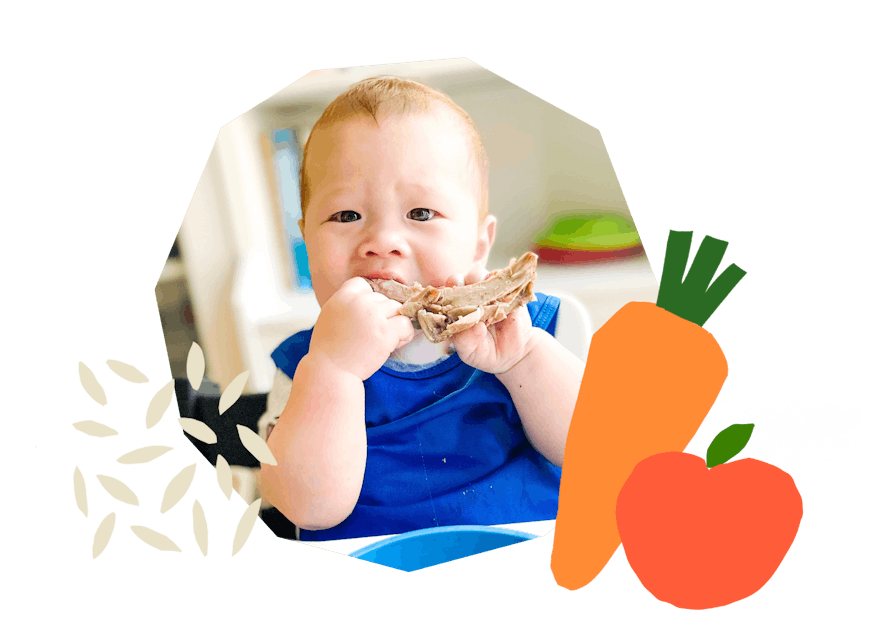
The Program Baby-Led Weaning with Katie Ferraro
A step-by-step digital program for starting solid foods safely and navigating the original 100 FIRST FOODS™ meal plan with baby-led weaning.
 EXPERT-LED, PROVEN APPROACH TO EATING REAL FOOD
EXPERT-LED, PROVEN APPROACH TO EATING REAL FOOD CONCISE VIDEO TRAININGS TO MASTER BABY-LED WEANING
CONCISE VIDEO TRAININGS TO MASTER BABY-LED WEANING 100 FIRST FOODS DAILY MEAL PLAN WITH FOOD PREP VIDEOS
100 FIRST FOODS DAILY MEAL PLAN WITH FOOD PREP VIDEOS
Baby-Led Weaning for Beginners Free Workshop
Is your baby ready to start solid foods, but you’re not sure where to start? Get ready to give your baby a solid foundation to a lifetime of loving real food…even if you’re feeling overwhelmed or confused about this next stage of infant feeding.
Get baby-led weaning recipes and tips delivered to your email inbox.

